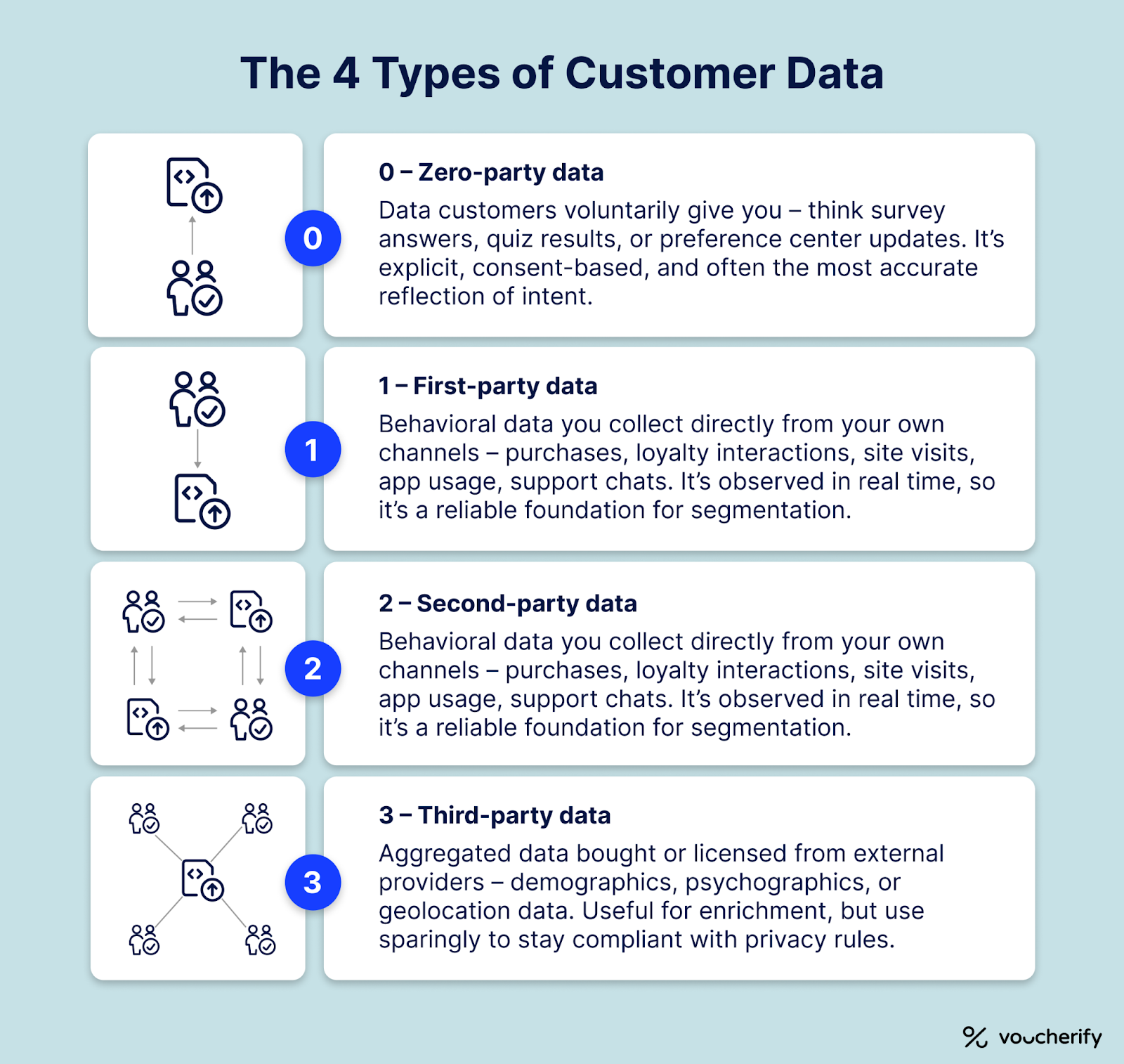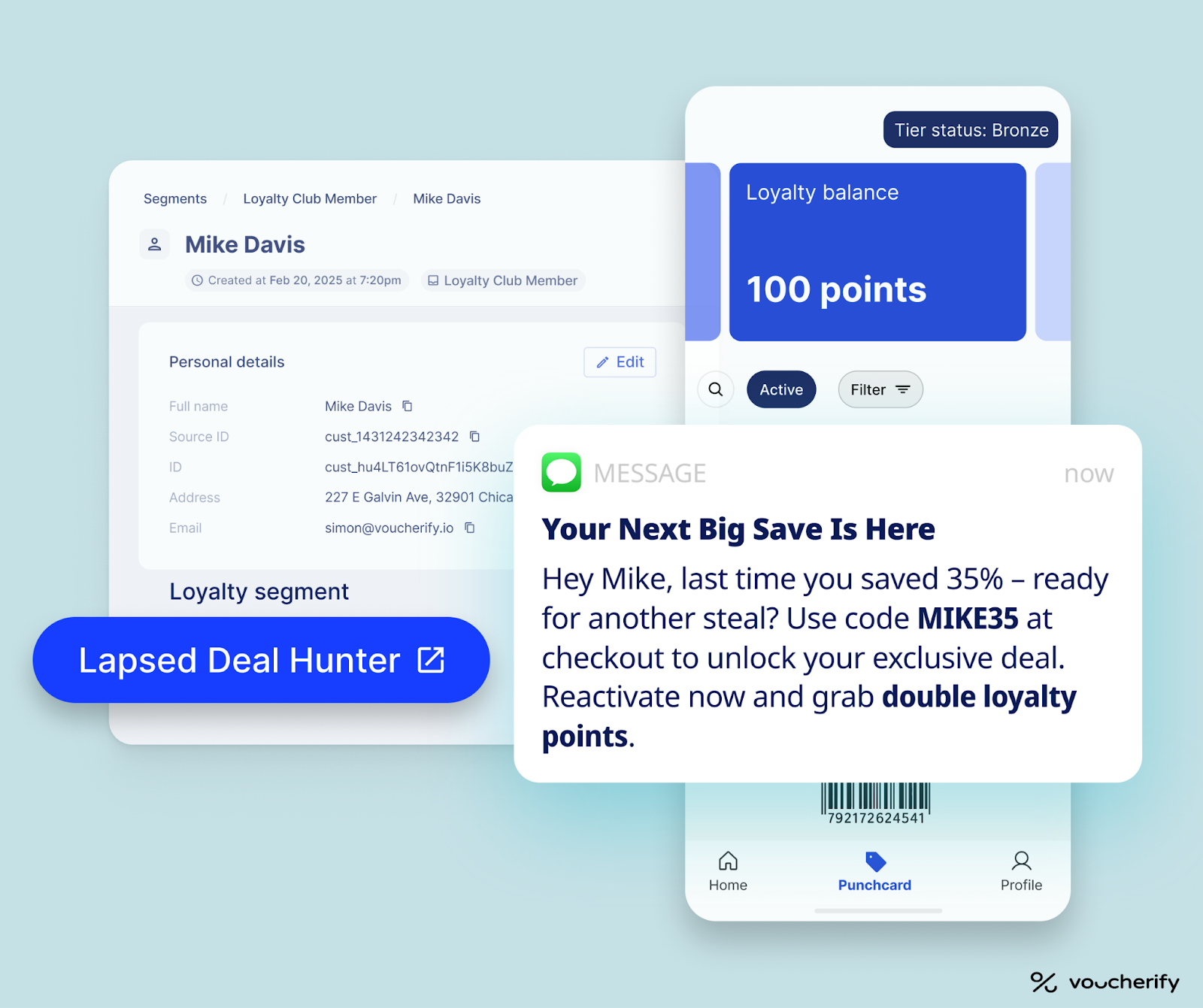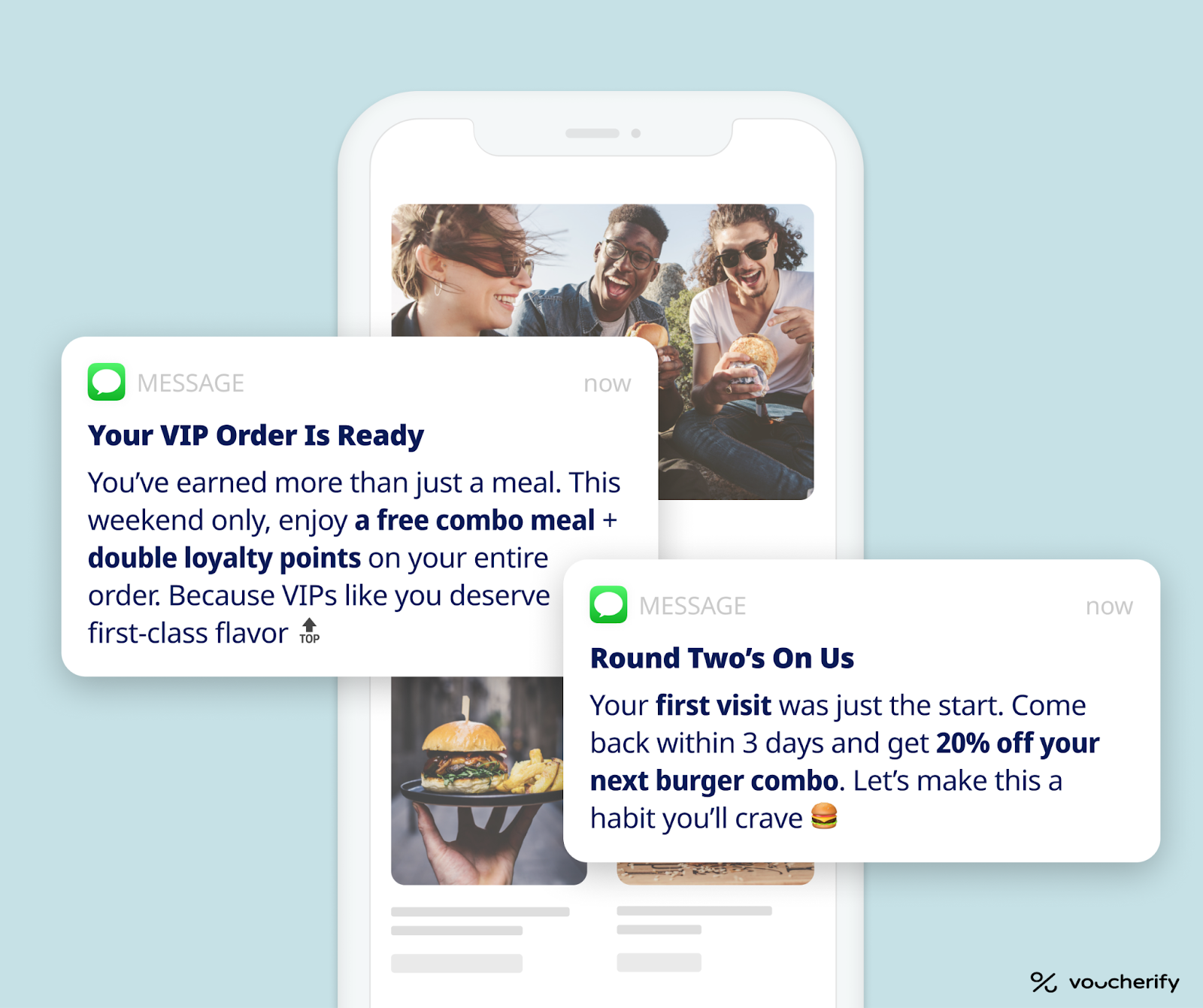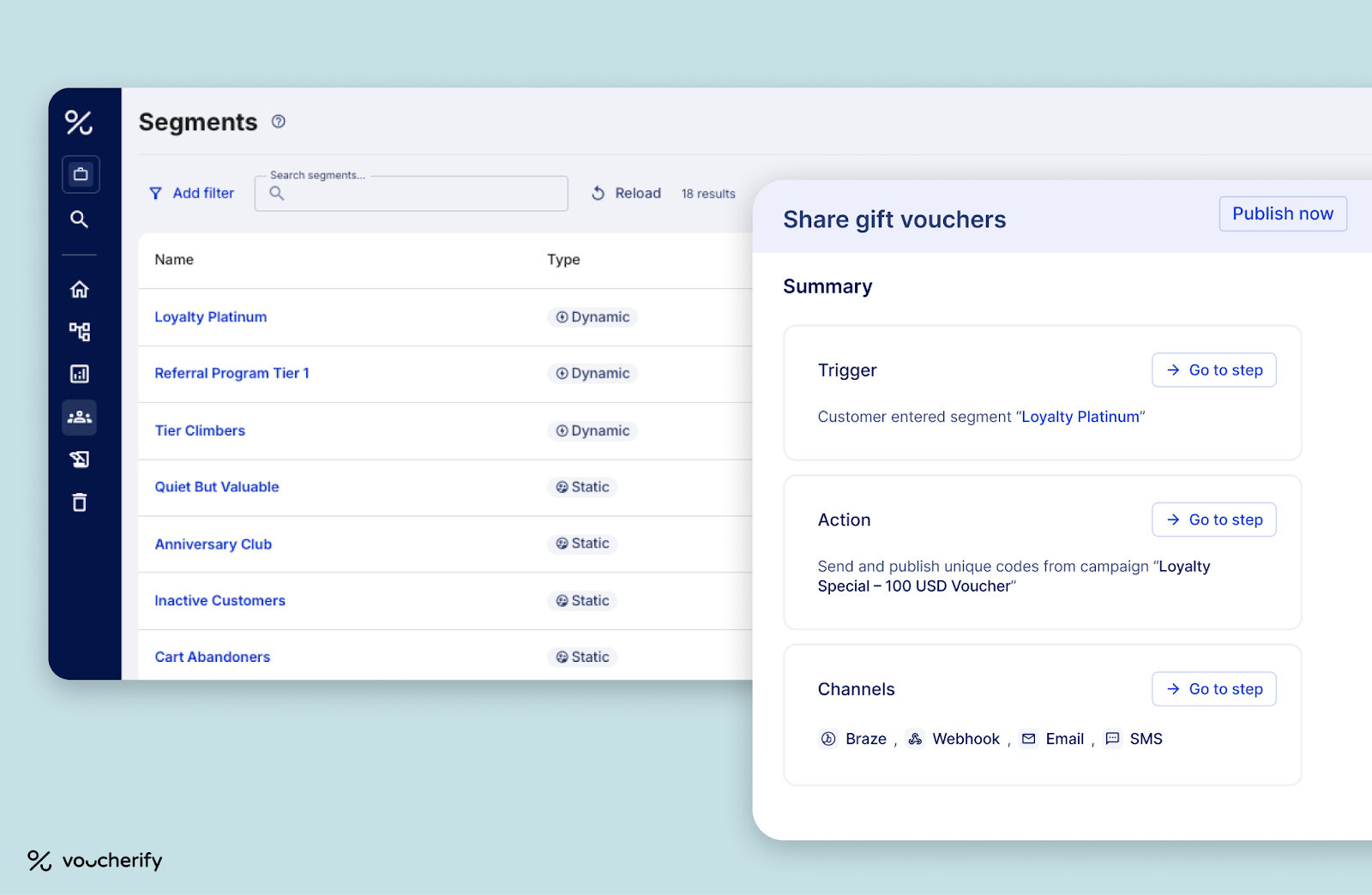
In today’s ultra-competitive market, generic loyalty programs just don’t cut it. Customers expect brands to know them – not vaguely, but deeply. They want rewards, offers, and experiences that match their needs and habits. Anything less feels like noise. That’s where loyalty segmentation comes in.
By dividing your customer base into meaningful groups based on behaviors, preferences, and value, you can create tailored experiences that actually resonate. No more one-size-fits-all campaigns. And the numbers? They speak for themselves.
In this guide, we’ll explore what loyalty segmentation is, how it works, and how to make it work for your brand – with practical steps to put segmentation at the heart of your loyalty strategy.
Loyalty segmentation is the strategy of recognizing that not every customer in your loyalty program is the same – and making sure you treat them accordingly.
At its core, it means grouping customers into meaningful segments based on how they behave and engage with your brand. That includes:
Rather than sending the same offers to everyone, loyalty segmentation helps you identify key differences between customers – and deliver rewards, messages, or content that actually fit.
A high-spending, highly engaged shopper deserves a different experience than a one-time buyer. And someone who regularly refers friends or redeems points shouldn’t get the same treatment as someone who never interacts at all. By analyzing this data, you can spot patterns and create customer segments that make your loyalty program more personalized.
Implementing loyalty segmentation brings a number of benefits for both your business and your customers. Here are some of the most important reasons to segment your loyalty program:
Focusing on specific segments allows you to run targeted retention strategies (like special perks for at-risk customers or VIP treatment for top spenders). And even small improvements can make a big difference – for example, a 5% increase in customer retention can drive at least a 25% increase in profit, according to Bain & Company.
That’s because loyal customers tend to stick around longer, spend more over time, and engage more deeply with your brand – so you’re not just protecting revenue, you’re actively growing it.
Loyal customers spend more – especially when they feel seen. In fact, 57% of consumers say they spend more with brands they feel loyal to. And when offers feel relevant, that loyalty only gets stronger.
Segmentation enables personalized promotions (coupons, recommendations, rewards) that encourage additional purchases. Customers are also more likely to engage with content, emails, and program features that match their interests – deepening their connection to your brand over time.
Blanket campaigns? They’re easy to send – and easy to ignore.
Targeted marketing, on the other hand, is far more effective. When you craft campaigns for specific customer segments, you’re not guessing – you’re sending the right message to the right group, at the right time. And the results are here to confirm this.
In short, segmentation ensures you’re spending resources where they matter most – on strategies that resonate with each group, improving the return on your marketing spend.
Loyalty segmentation helps you deliver relevant experiences to different groups, which enhances CX. High-value customers? Give them fast-track service and VIP-only rewards. New members? Start them off with a warm welcome and easy onboarding that builds confidence and trust.
This kind of personalization makes a real impact – brands using individualized offers have seen loyalty increase by 47% and satisfaction rise by 36%. So, the more personal and timely the experience, the stronger the connection. Segmentation is how you get there – and how you keep your customers coming back for more.
Segmentation shines a light on where your most valuable customers are and where potential lies. It often follows the classic 80/20 rule, where 80% of your revenue comes from just 20% of your customers. By identifying which segments drive the biggest results, you can focus your time, budget, and incentives where they matter most.
For example, you might invest more in delighting your VIPs – the ones generating the most value – while using automated, low-lift campaigns to re-engage dormant or lower-value segments.
Great segmentation doesn’t happen by accident – it takes a clear plan, the right data, and a structure you can actually use. The good news? It’s not as complex as it sounds.

Here’s a step-by-step framework to help you go from idea to execution:
The first step in loyalty segmentation isn’t slicing your data – it’s defining why you’re segmenting in the first place. Without a clear goal, even the most sophisticated segmentation model risks becoming just a chart in a dashboard.
Start by setting one clear, measurable objective that connects directly to a business outcome. For example, your objectives might be to:
You can’t build loyalty segmentation on assumptions – and surface-level traits like age or location won’t cut it. The best-performing programs go deeper, using behavioral and transactional data to uncover what actually drives action. In fact, brands that prioritize behavioral segmentation report up to 91% better ROI compared to those relying on basic demographics.
So, choose variables that actually move the needle:
No data? No segmentation. It’s that simple. To power the meaningful variables above, you’ll need to pull from multiple sources across your stack. Think beyond just transactions. A connected view of your customer means layering behavioral signals, stated preferences, and enrichment data into a single profile.
Here’s a simplified hierarchy to guide your data sourcing:

Learn more: Data Goldmine: Unlocking Zero-and First-party Insights Through Loyalty Programs
Learn more: Customer Data Platforms for Loyalty Programs: Use Cases & Challenges
Once you’ve nailed down your variables and data sources, it’s time to turn that insight into action. Start by grouping customers into 4–6 segments based on shared behaviors, preferences, or value to your business. The goal isn’t to label every customer – it’s to identify clusters you can act on.
And don’t just number them (“Segment A,” “Segment B”). Name them. A good segment name turns abstract data into a relatable customer profile – and helps your entire team speak the same language across campaigns, dashboards, and decisions.
Example tags that bring data to life:

Don’t just map value – map intent. Segmenting by behavior + intent signals (like saved items, app usage, or review patterns) can reveal “hidden gems” – customers who may not buy often but show strong signs of future loyalty.
Not every segment deserves the same investment. Use a value-influence matrix:
This helps you focus your budget and team energy where it’s most effective – segments that already offer value and can be moved upward with the right strategy.
Pair the value-influence matrix with frameworks like ICE (Impact, Confidence, Ease) or a visual quadrant chart to make prioritization simple and aligned across teams. Choose segments that check all three boxes – high impact, high confidence in success, and easy to reach. Then, test and ramp up those strategies fast.
Once you’ve mapped and prioritized your segments, it’s time to activate them. Forget “blast campaigns” – today’s consumers expect more. In fact, 80% say they’re more likely to buy from brands that offer personalized experiences.
Every segment deserves a tailored journey – across rewards, messaging, and delivery channels. Loyalty segmentation only delivers value when it’s used to personalize at scale.
So, customize these three things:

Use your segmentation data as dynamic campaign logic – not static lists. Instead of building separate workflows for each segment, structure your automations using conditional logic and variables (e.g. if segment = VIP, then apply reward_tier = gold, message_template = exclusive, channel_priority = push).
With promotion & loyalty softwares like Voucherify, you can inject segment-specific rewards, messaging blocks, and even redemption rules directly into your campaign flows – enabling personalization without ballooning campaign management overhead.
Loyalty segmentation isn’t a one-time setup – it’s an ongoing optimization loop. Customer behaviors shift, preferences evolve, and so should your segments. To stay relevant and maximize results, make experimentation and iteration part of your core process.
So, run smart experiments:
And evolve your segments over time:
Set up a segmentation QA loop inside your stack. Feed campaign outcomes – like conversions, redemptions, or drop-off points – back into your analytics layer or customer data platform. Then use this to re-cluster, re-score, or flag anomalies in how segments behave over time.
Even the smartest segmentation loses power if it lives only in your marketing dashboards. To truly scale, you need to operationalize your segments across all customer-facing systems.
Embed segmentation into:
Train internal teams with one-pagers or cheat sheets that define each segment’s traits, goals, and engagement tips. Surface segment tags visibly in tools reps already use, like your helpdesk or POS.
Why it matters: When segmentation is embedded into your operational DNA, every team works from the same playbook – making every message, offer, or interaction feel intentional and relevant.
Connect your segmentation logic directly to live customer events and metadata. Tools like Voucherify let you attach segment tags to real-time customer profiles, so when someone makes a purchase, redeems a reward, or reaches a new tier – their experience updates instantly. This enables dynamic triggers like: “Send a personalized push when a Mid-Tier Explorer hits 3 orders in 30 days – and move them into VIP onboarding.”
We’ve covered a lot on how to build and activate a loyalty segmentation strategy – now let’s zoom out and look at the big picture.
There’s no single “best” way to segment your customer base. Instead, you can choose from a set of proven models – or combine them – to fit your business, goals, and data maturity.
Here are the most popular types of loyalty segmentation (and when to use them):
Loyalty segmentation brings serious ROI – but only when executed thoughtfully. only 33% of brands say they’re fully confident in their ability to personalize across the customer lifecycle. So, here are the possible hurdles you can encounter - and recipes how to solve them:
Loyalty data is often siloed – one team owns purchase history, another manages email engagement, another logs support tickets. Without unification, your segments are built on partial truths. In fact, 42% of marketers cite lack of organizational alignment as one of their biggest personalization challenges. And even if the right data exists, poor hygiene – like outdated records or mismatched IDs – leads to mistargeted campaigns and lost opportunities.
It’s easy to get segmentation wrong on both ends. Too broad? You lose personalization. Too narrow? You create 25 micro-groups your team can’t meaningfully act on. Many brands segment based on what's "interesting" – not what's actionable. That’s where strategy breaks.
Segmentation often leads to more campaigns – which can backfire if your messages overlap or conflict. Customers might get bombarded by offers or receive inconsistent tones across channels. Internally, disconnected teams can send redundant or even contradictory messages.
Personalized segmentation walks a thin line between relevance and intrusion. With stricter data privacy laws (GDPR, CCPA, etc.), marketers must be laser-focused on ethical data use and consent. Using sensitive variables without justification – or tracking without disclosure – can trigger compliance issues and erode trust.
Segmentation can unintentionally marginalize some customers – like only rewarding high spenders or using biased language in campaigns. Left unchecked, this creates a loyalty program that feels elitist, tone-deaf, or exclusionary.
Managing complex loyalty segmentation doesn't have to be overwhelming. Voucherify helps you automate, personalize, and scale every part of the segmentation process – without extra engineering effort.
With dynamic and static segments, you can group customers by real-time behaviors or fixed rules – such as total spend, last purchase, location, loyalty tier, or custom metadata. Thanks to real-time sync with your CRM or CDP, these segments stay up to date as customers interact with your brand.
Learn more: Building Customer Loyalty with CDP and CRM-Driven Personalization
From there, Voucherify lets you:

All of this happens in a composable, API-first platform built for security and scalability – so your loyalty program can grow without friction.
Loyalty segmentation isn’t just a trend – it’s the foundation of high-performing, personalized loyalty programs. When done right, it drives retention, boosts ROI, and delivers experiences that feel truly customer-first. By combining clear strategy with the right tools like Voucherify, brands of any size can turn raw data into actionable segments and create loyalty that lasts.